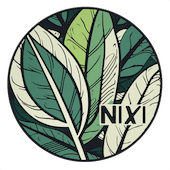Guardians of the forest // Ancestral medicines // Diets // Musical gifts
The Huni Kuin people of Caucho are an ancestral ethnicity preserving its culture, art, and a new musical language. They communicate with the essence of what we see as the forest, and they see it as the life of everything, the ‘yuxin’ or great spirit. The population has been building access to the culture of the so-called “white man” without losing their references and certainties. Through Chief Nasso, the great leader of the upstream villages, a man who with his humanitarian potential managed to introduce himself to what we know as politics, he was the first Huni Kuin to become a councillor of the municipality.
This way, Nasso made it possible for the definitive registration of Caucho lands, built a school, homes, and a large shed called “terreiro” where the big meetings, parties, and traditional rituals of his people take place. You will meet cheerful, genuine people, that are easy to access and communicate with.
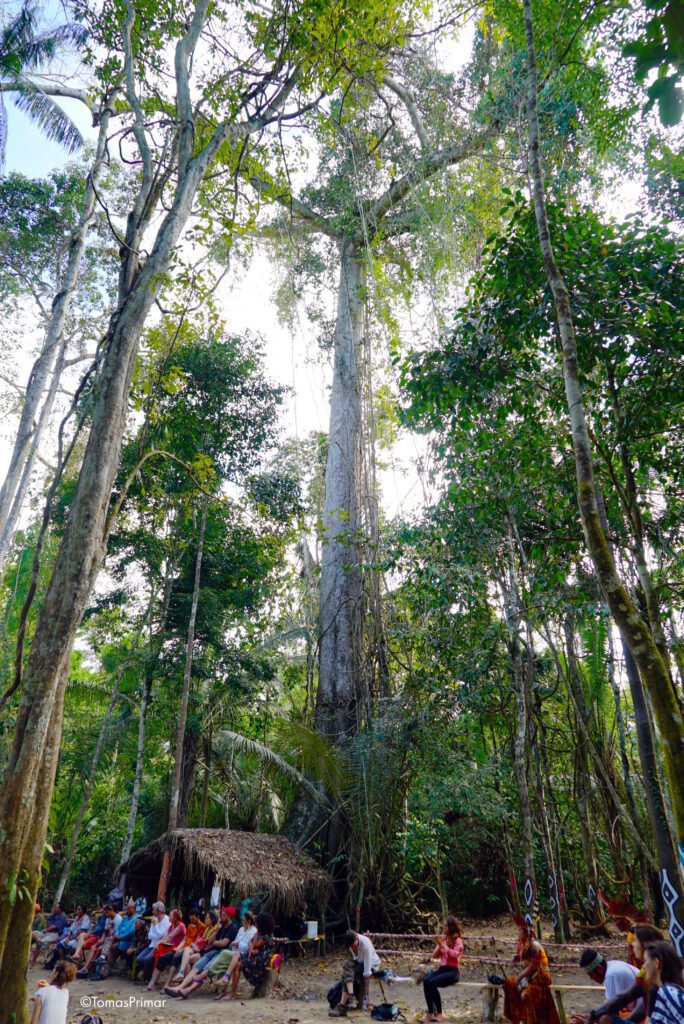
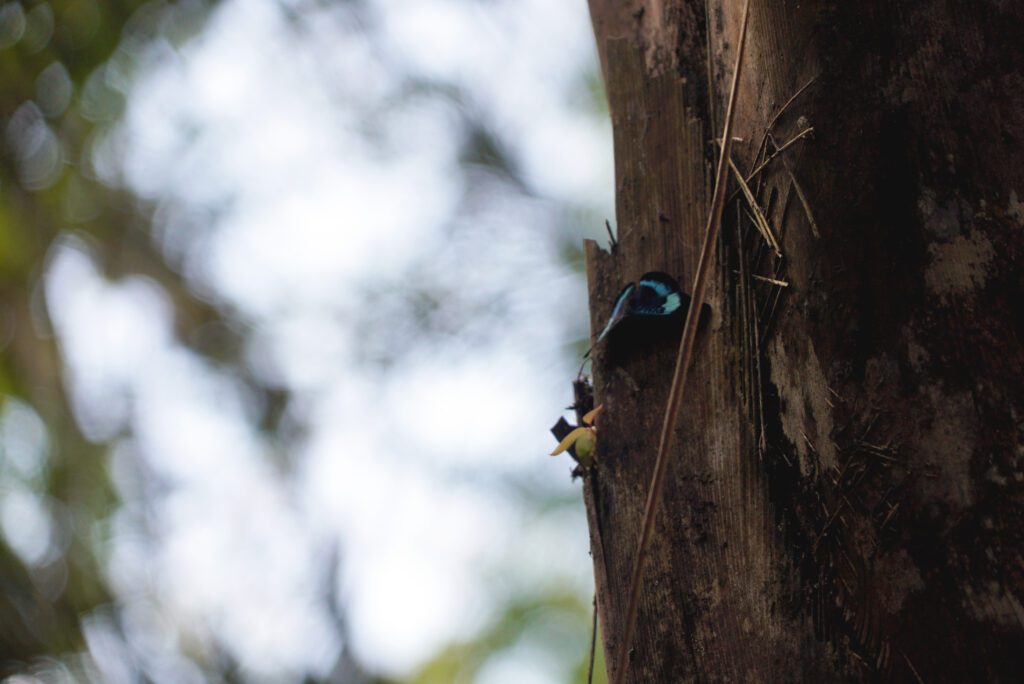
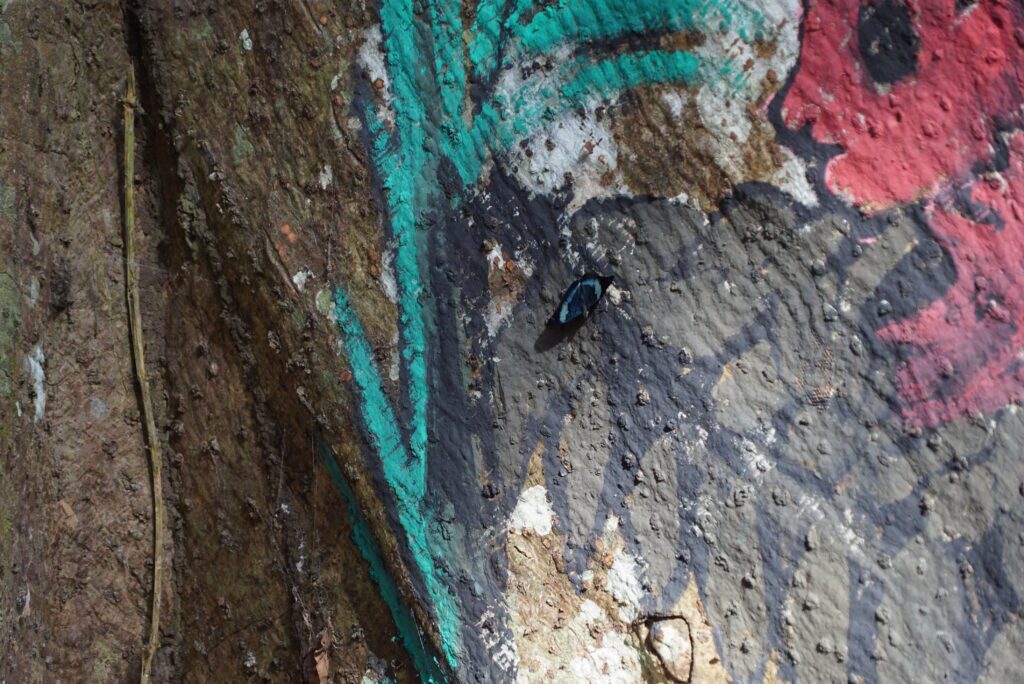
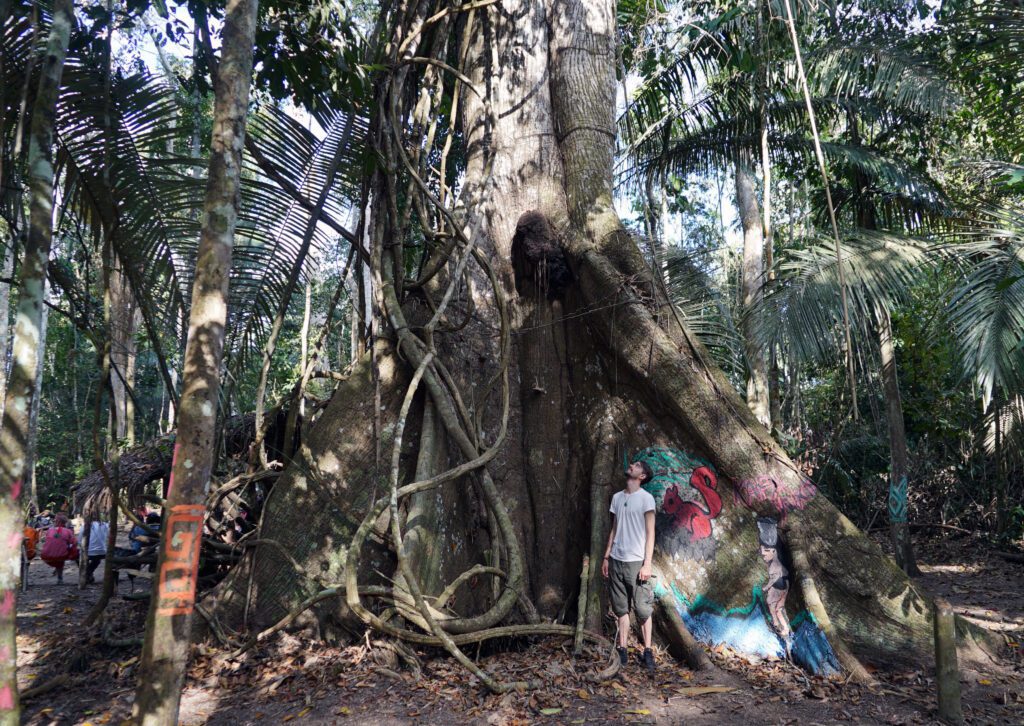
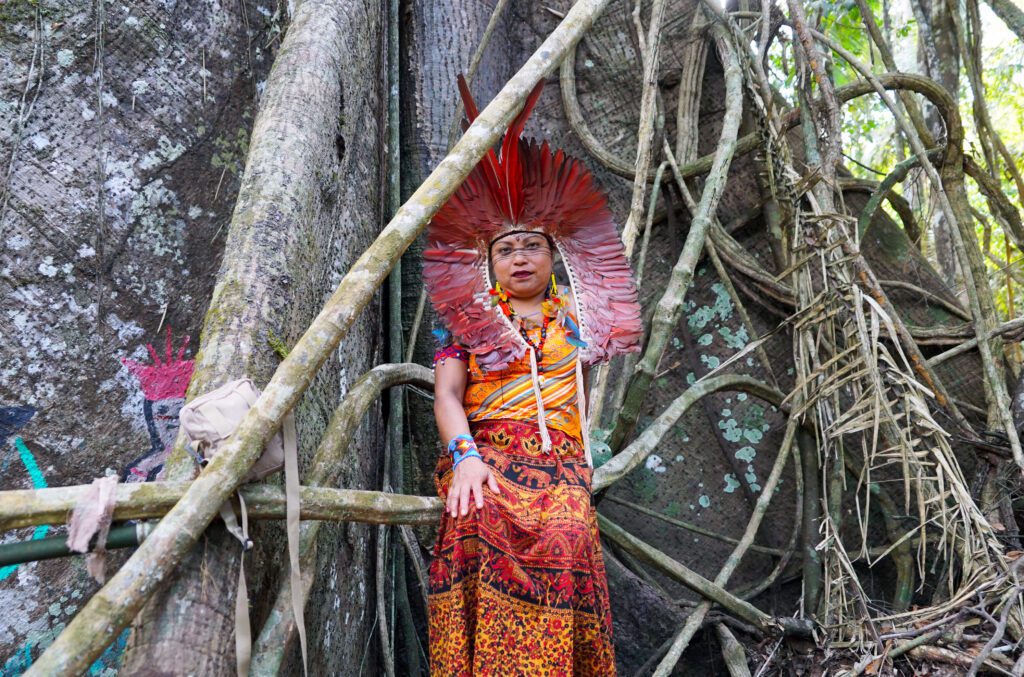
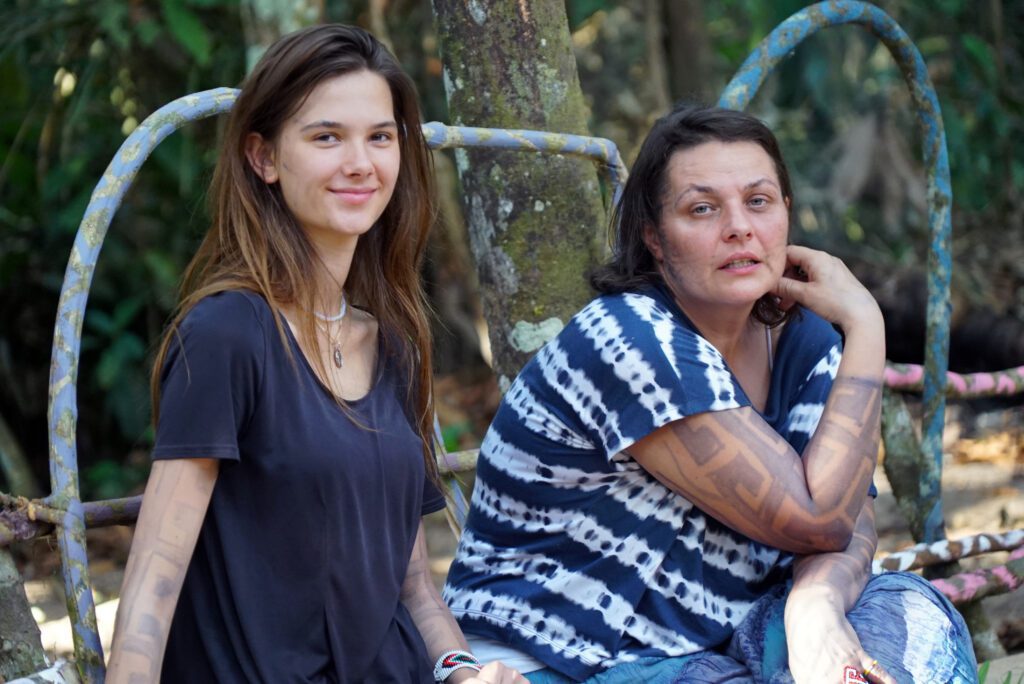
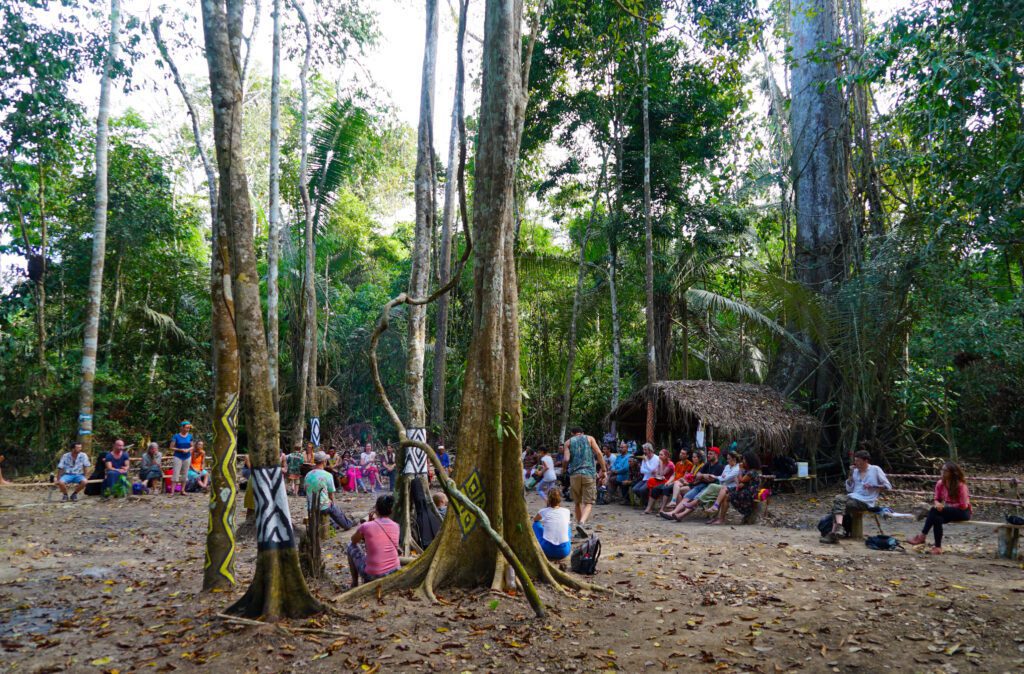
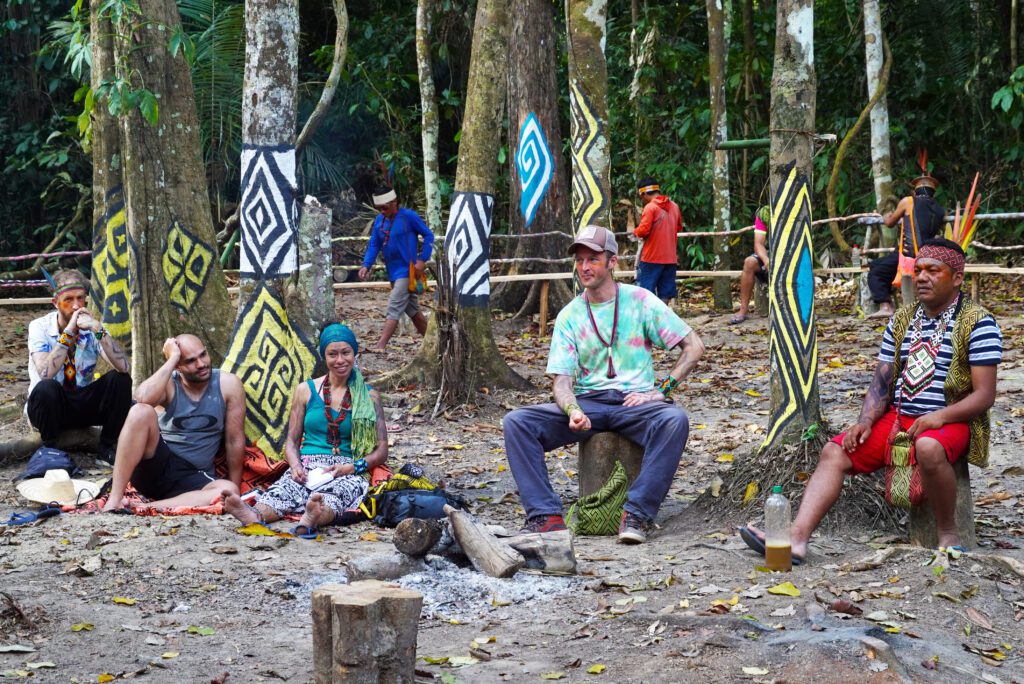

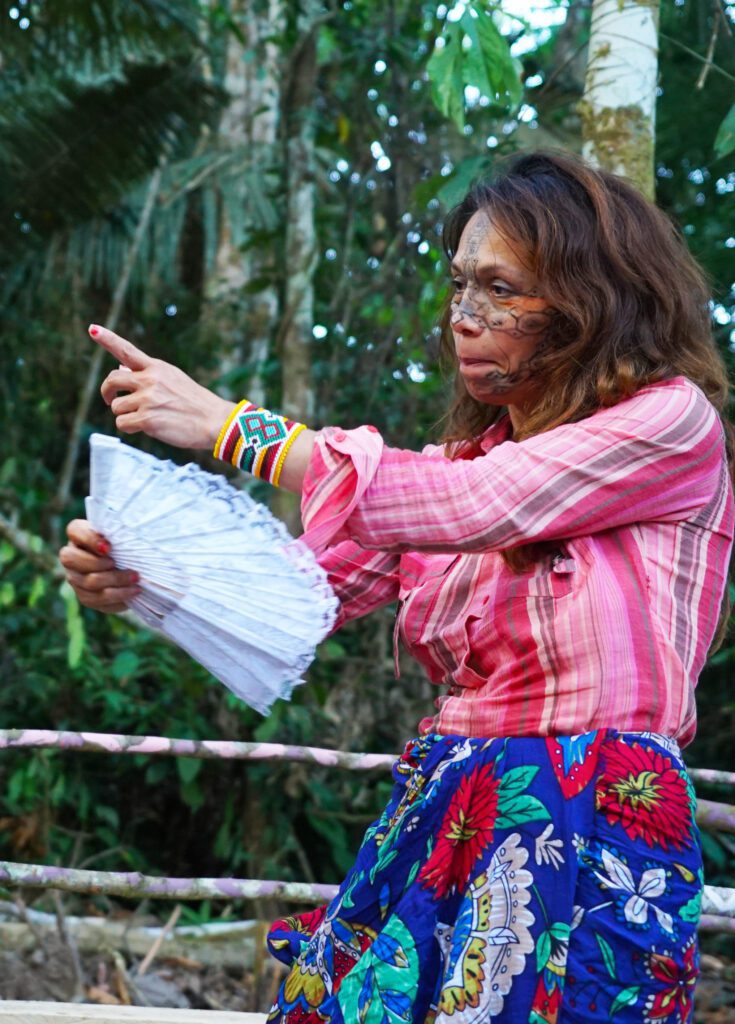

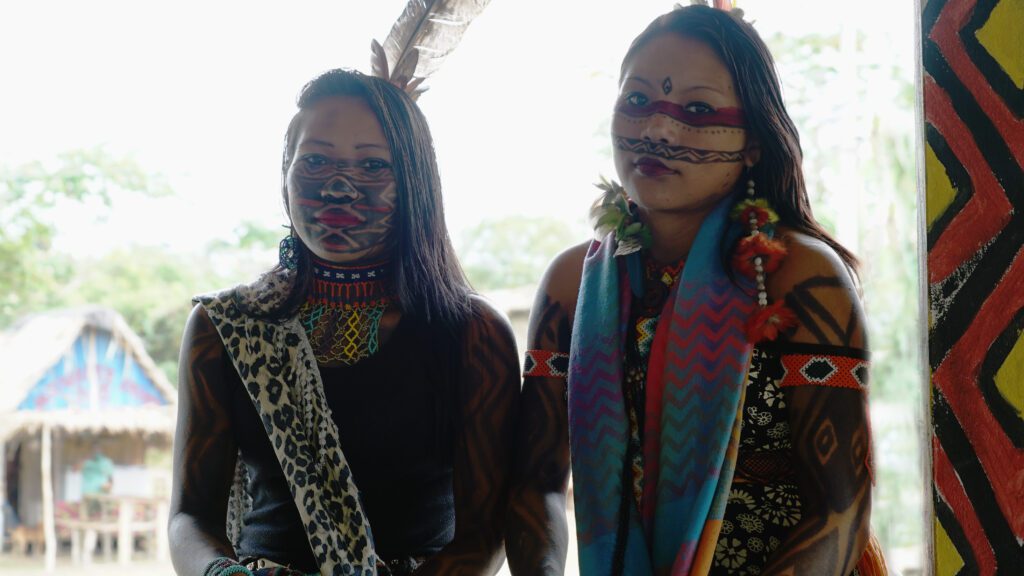
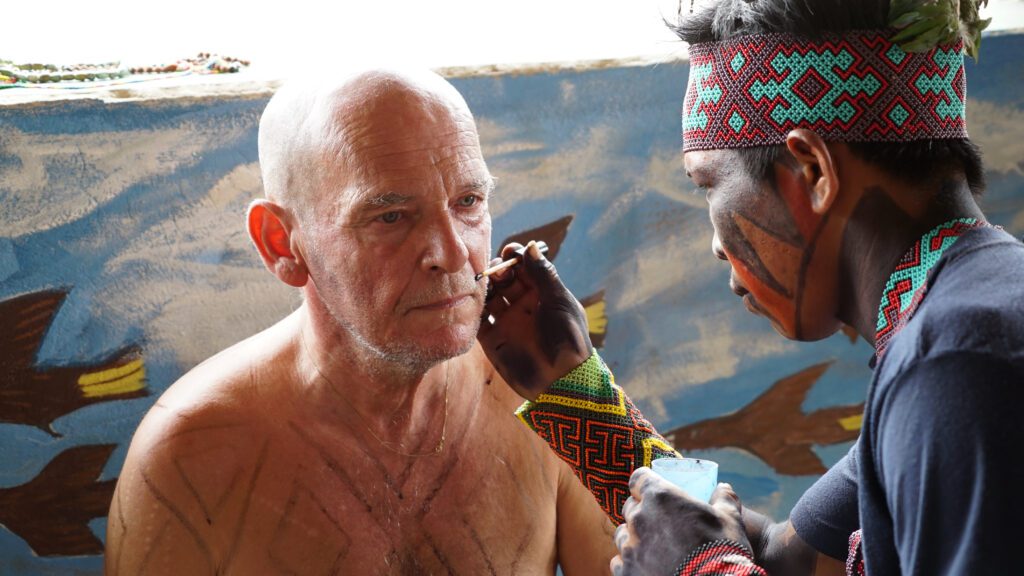
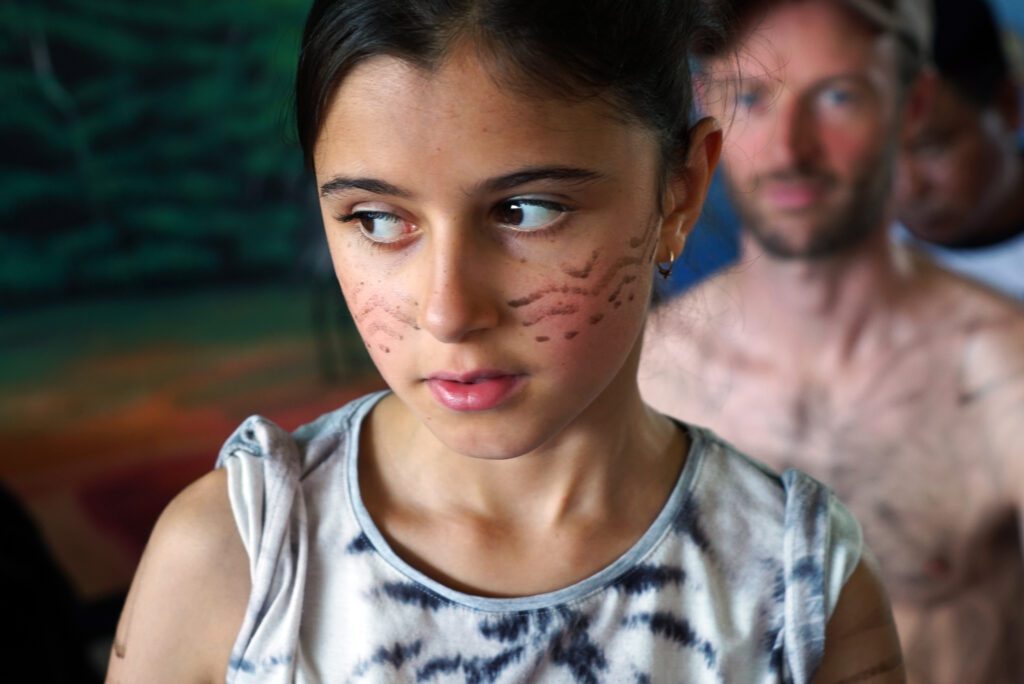
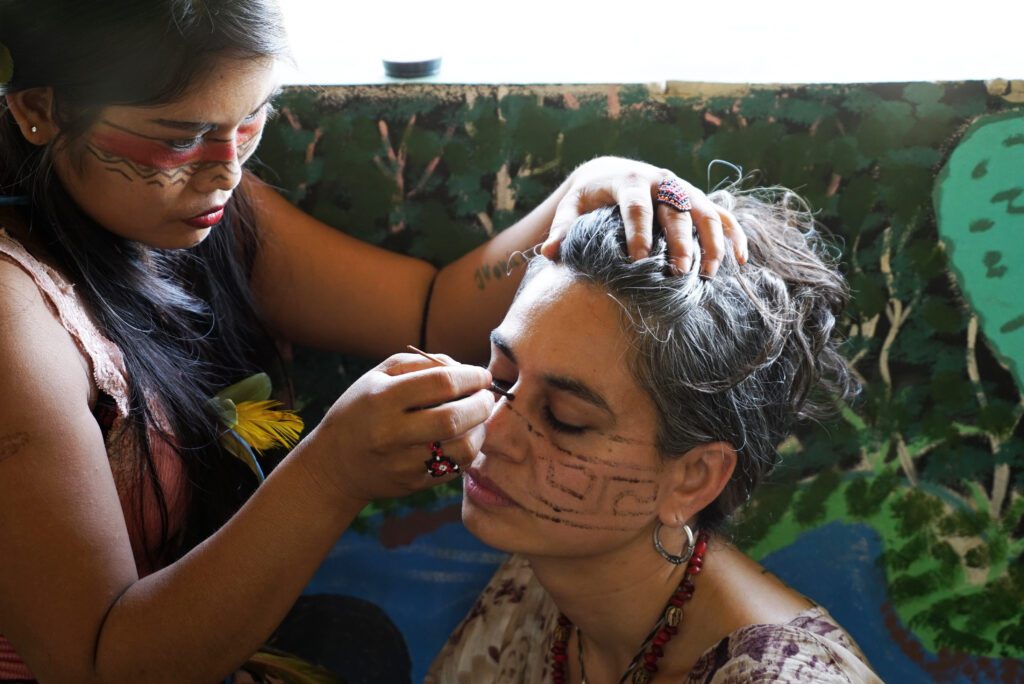
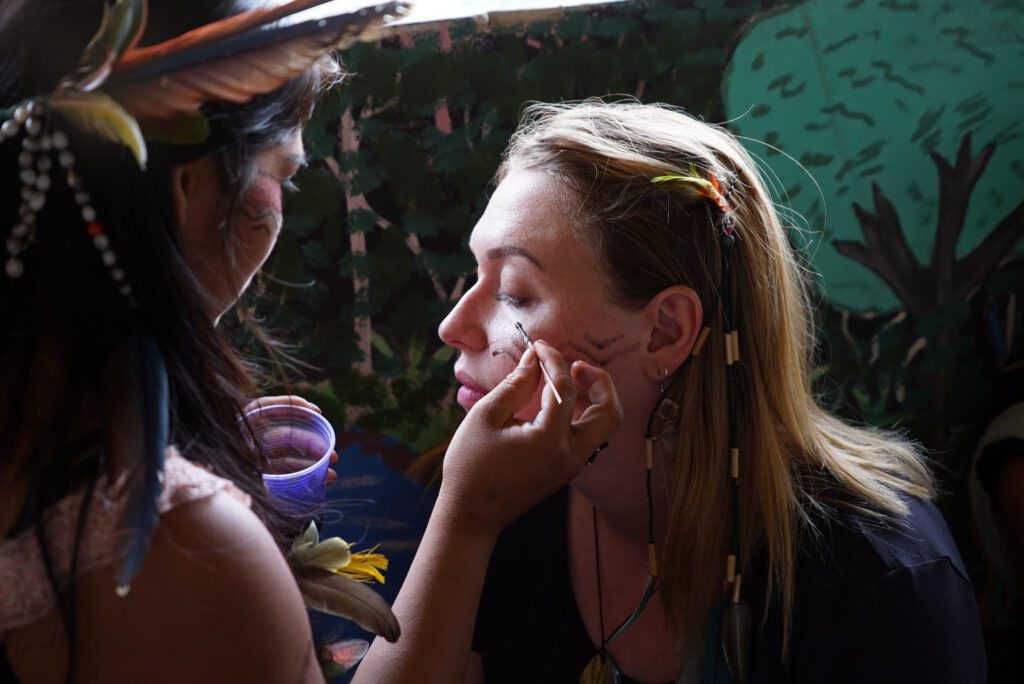
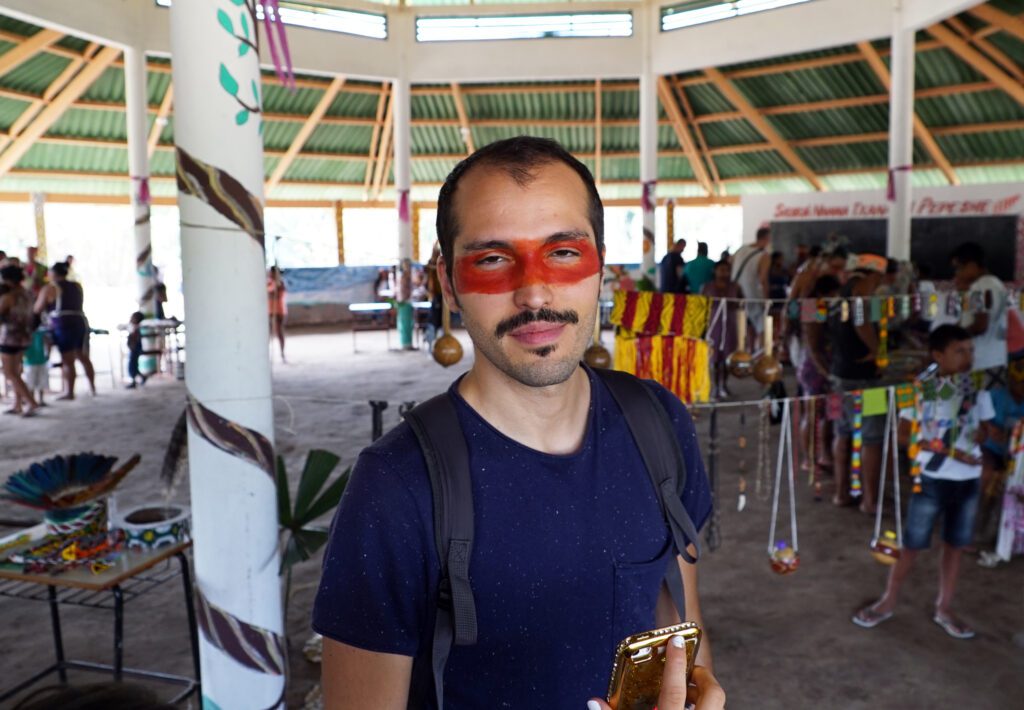

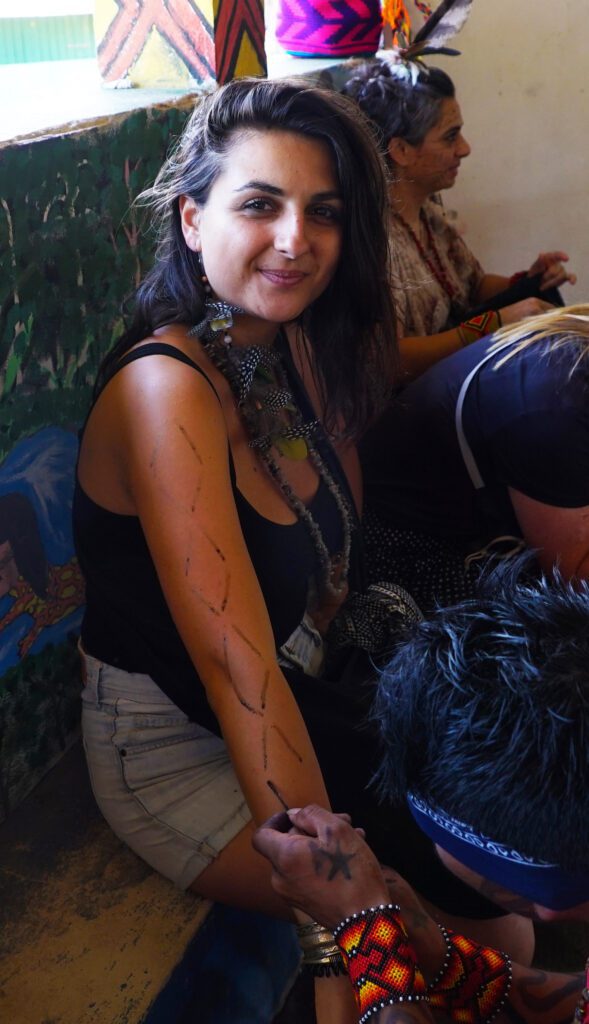

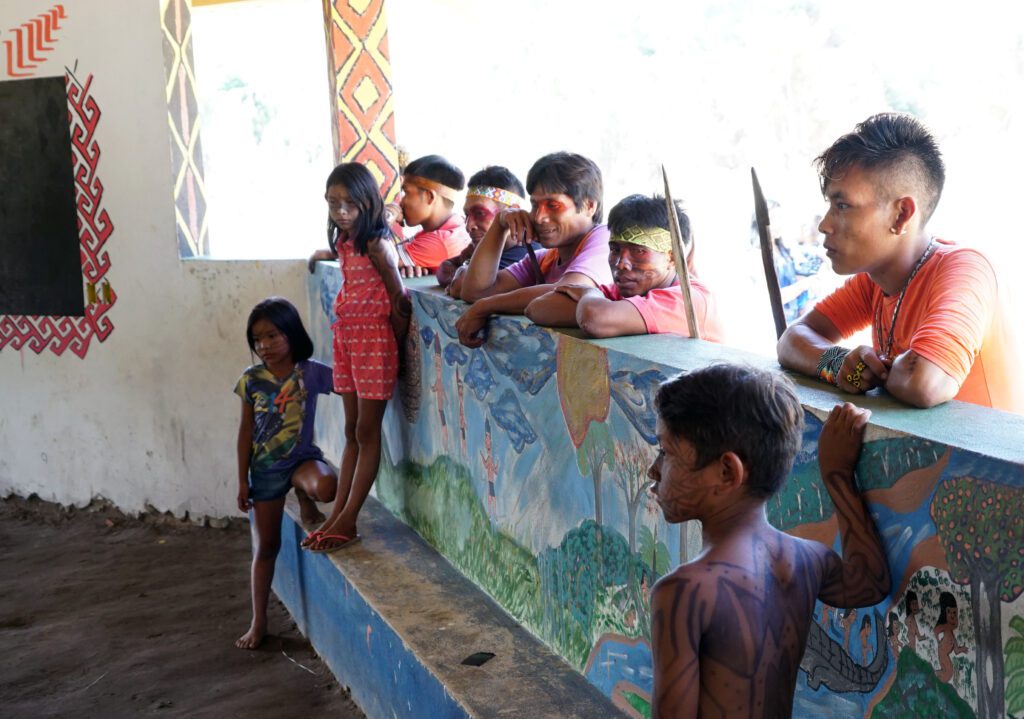
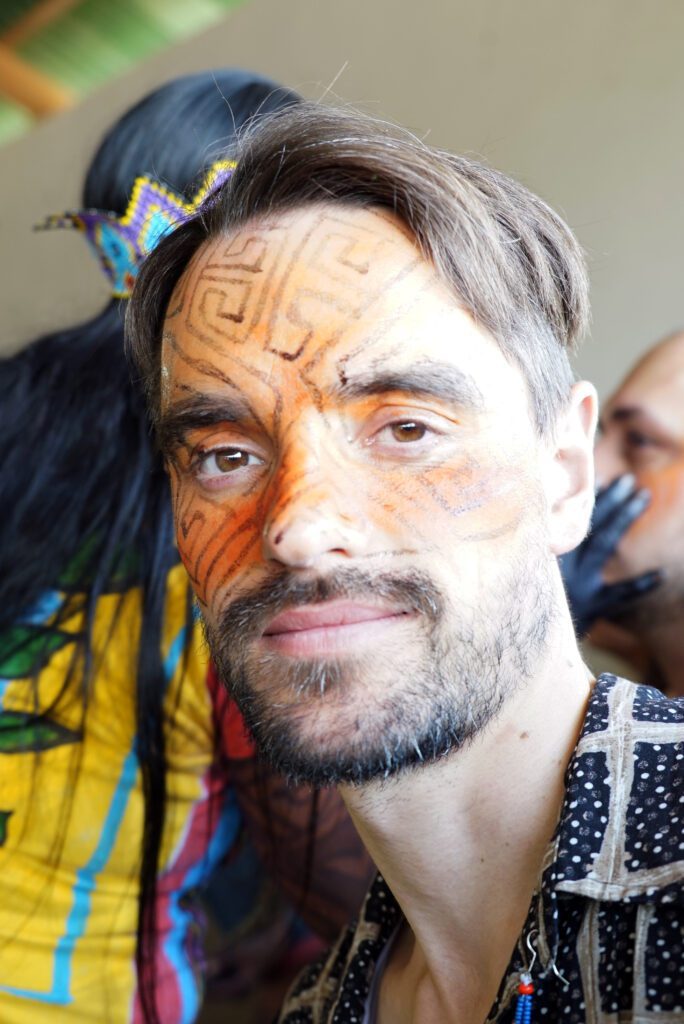
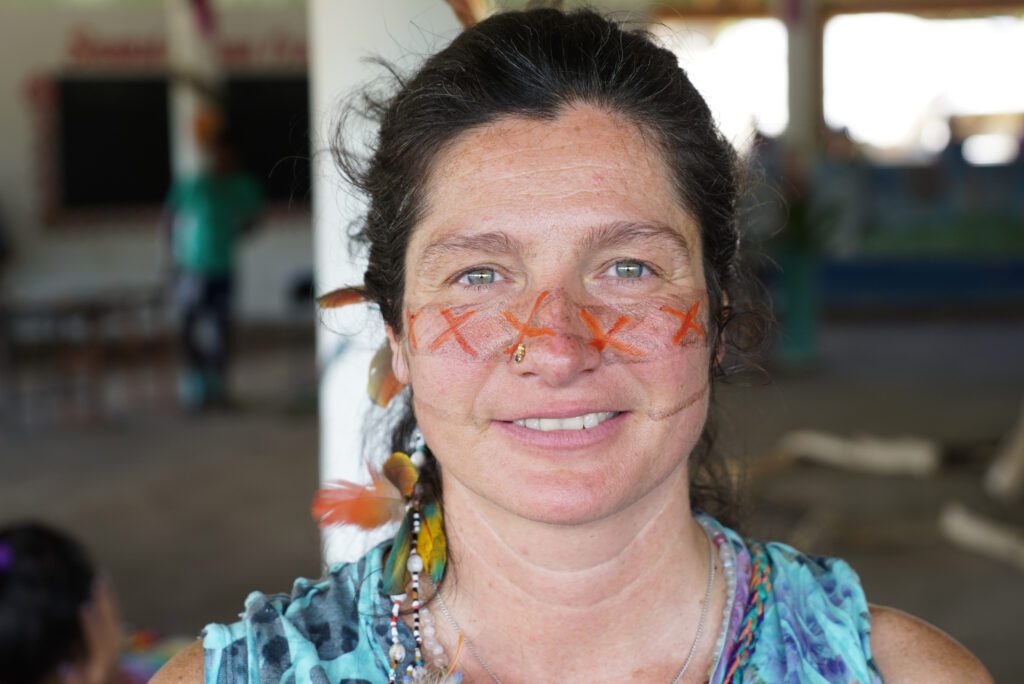
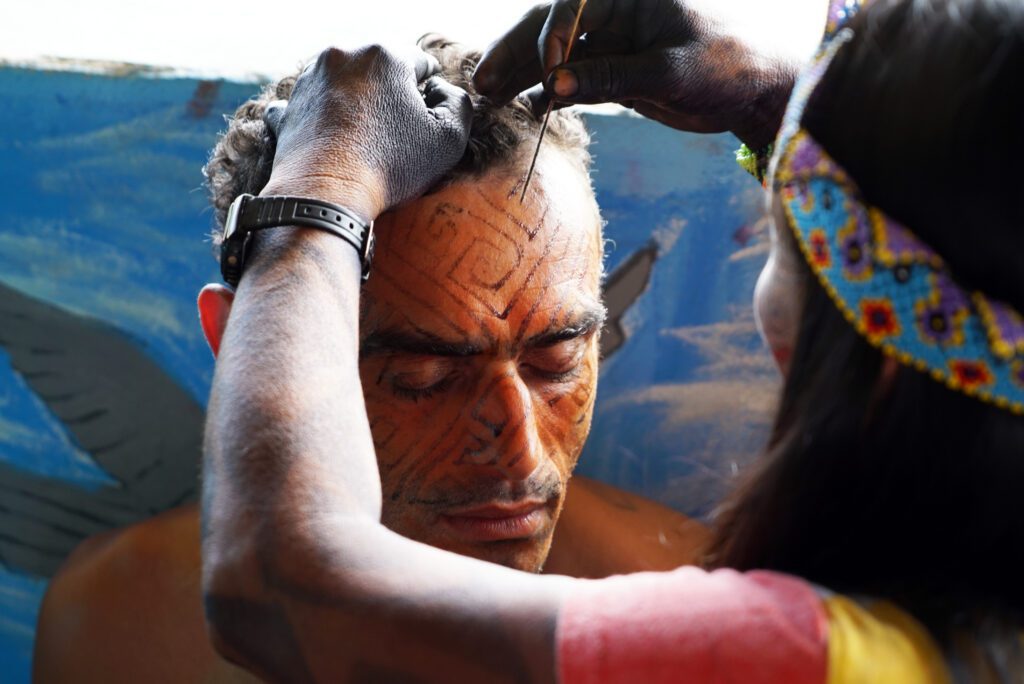
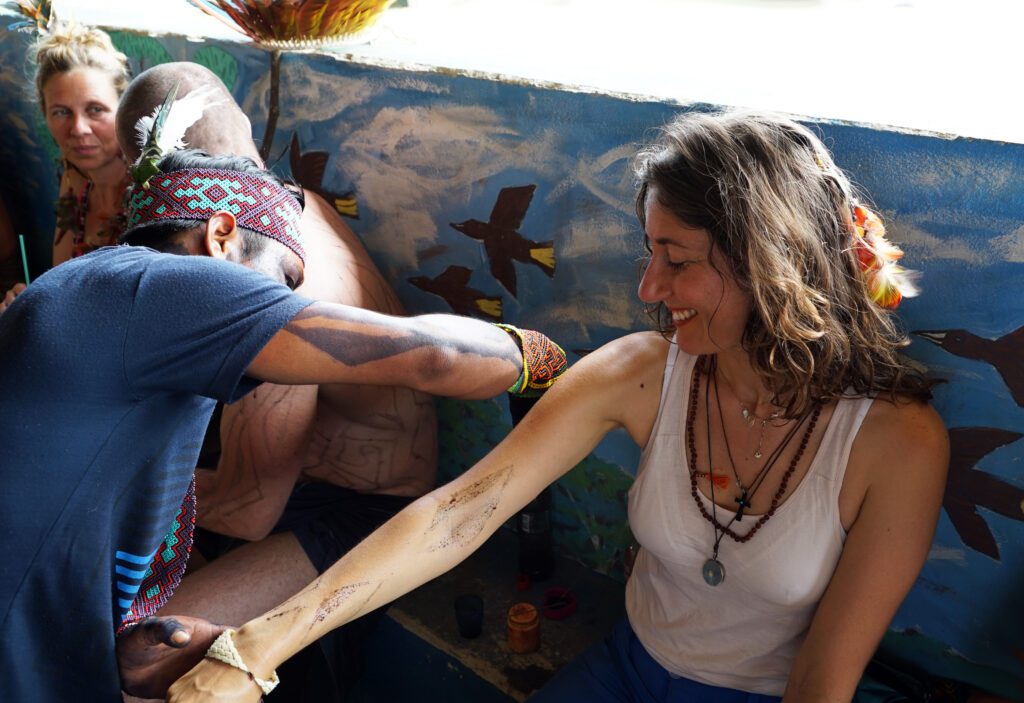
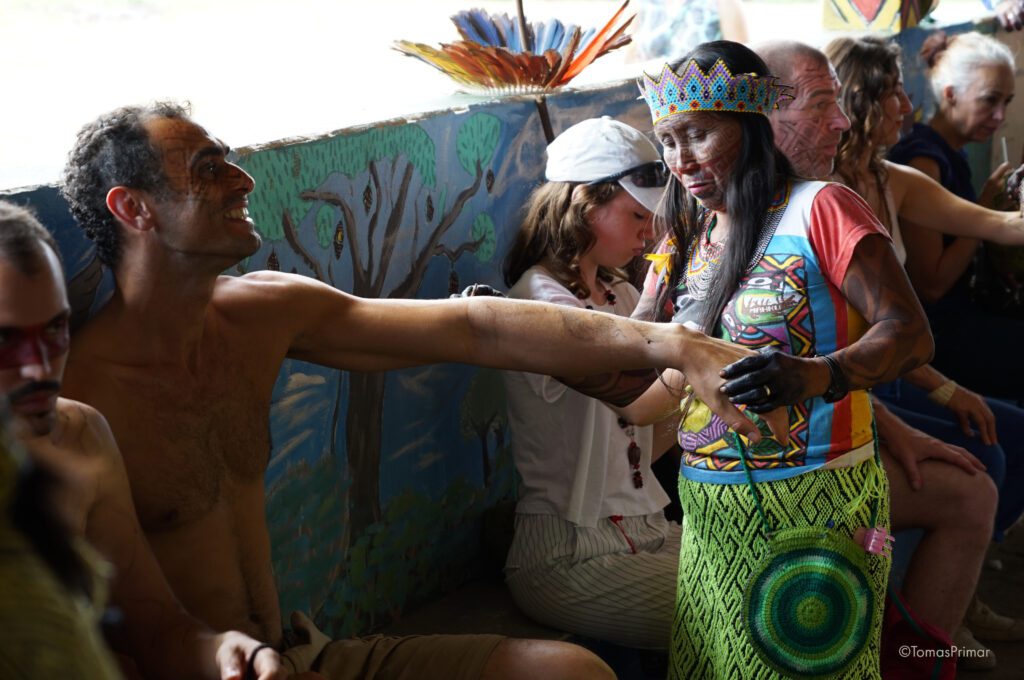
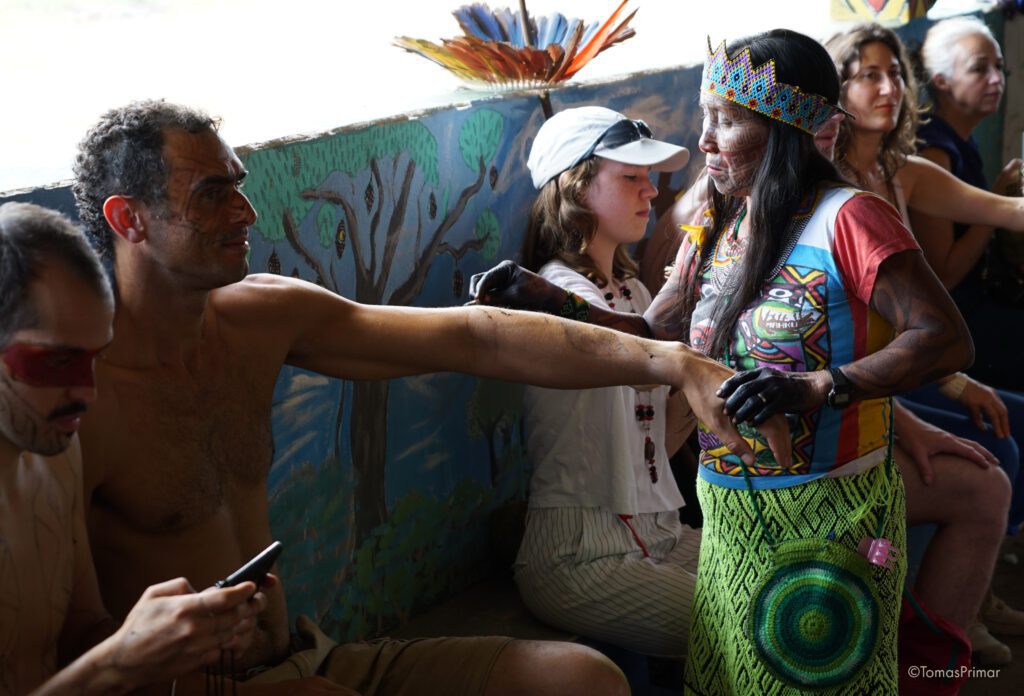
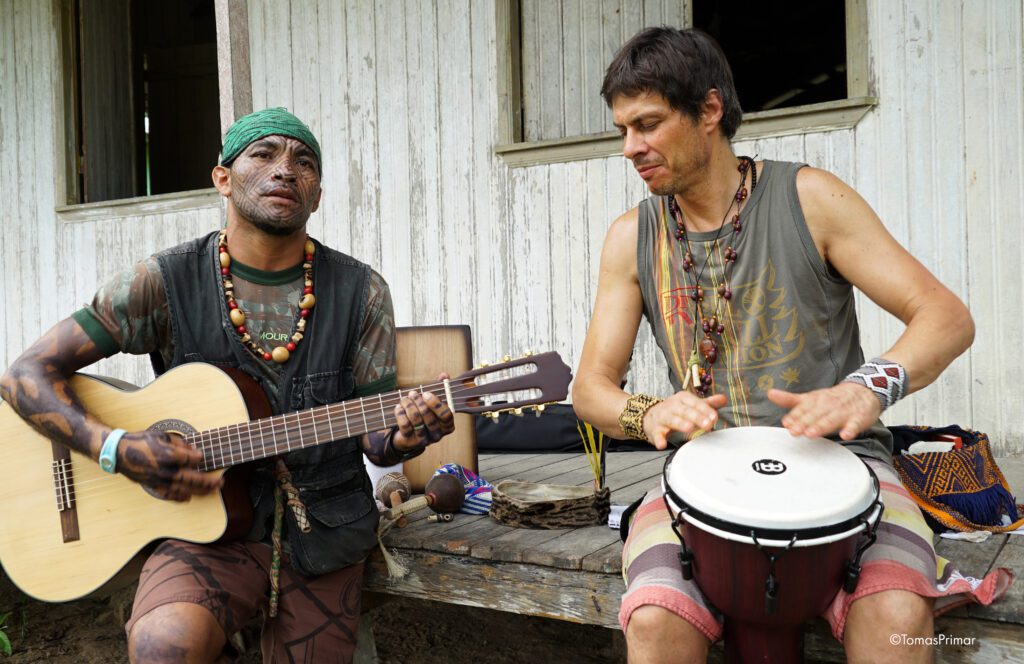
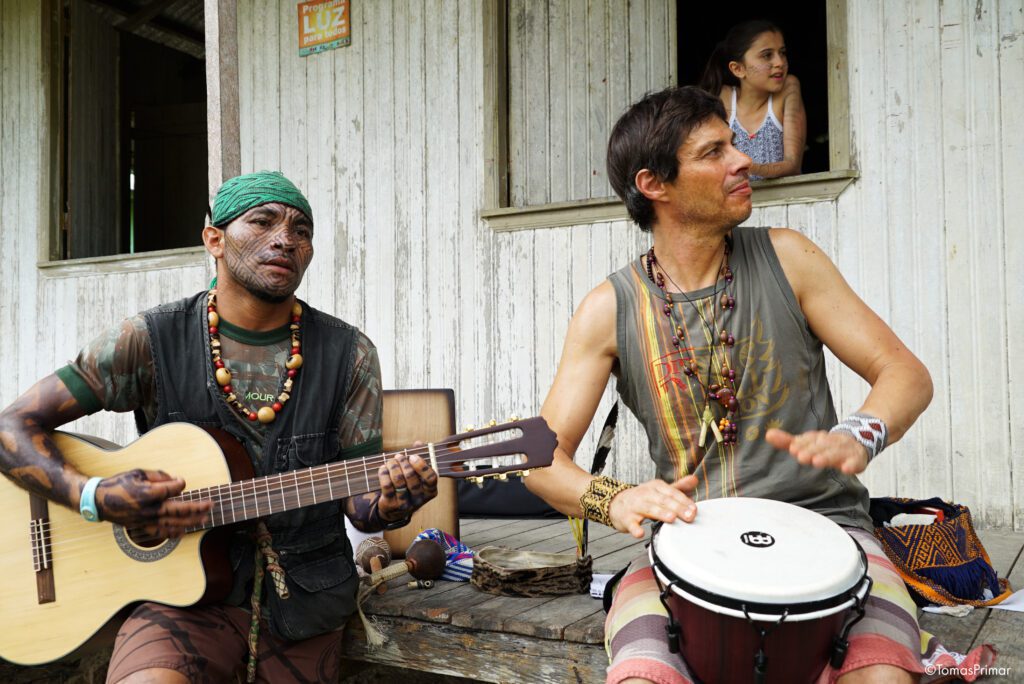
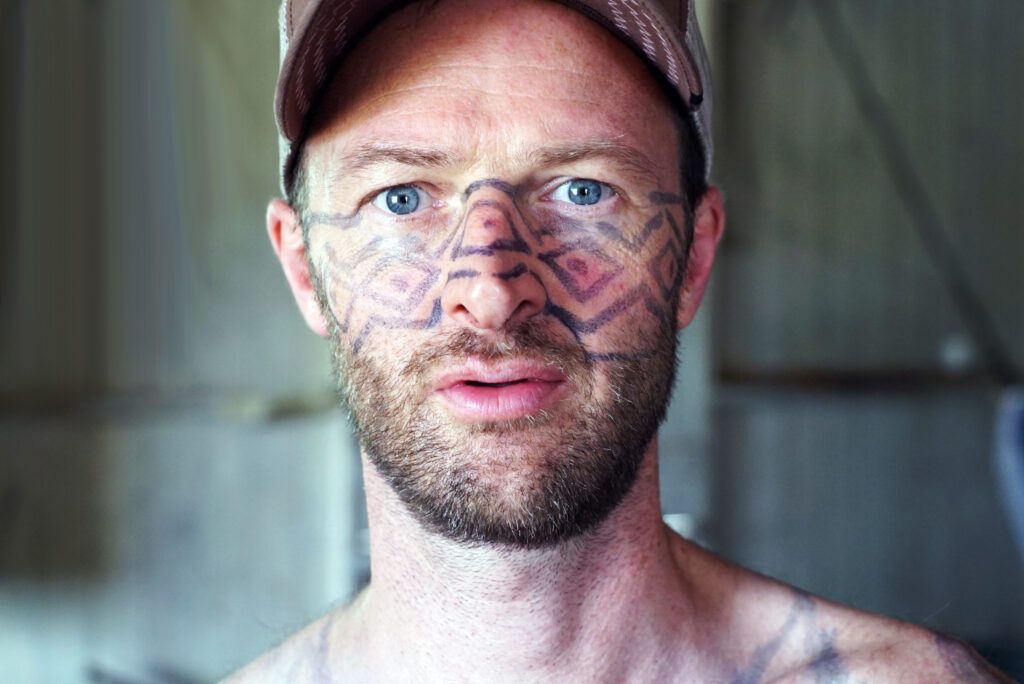
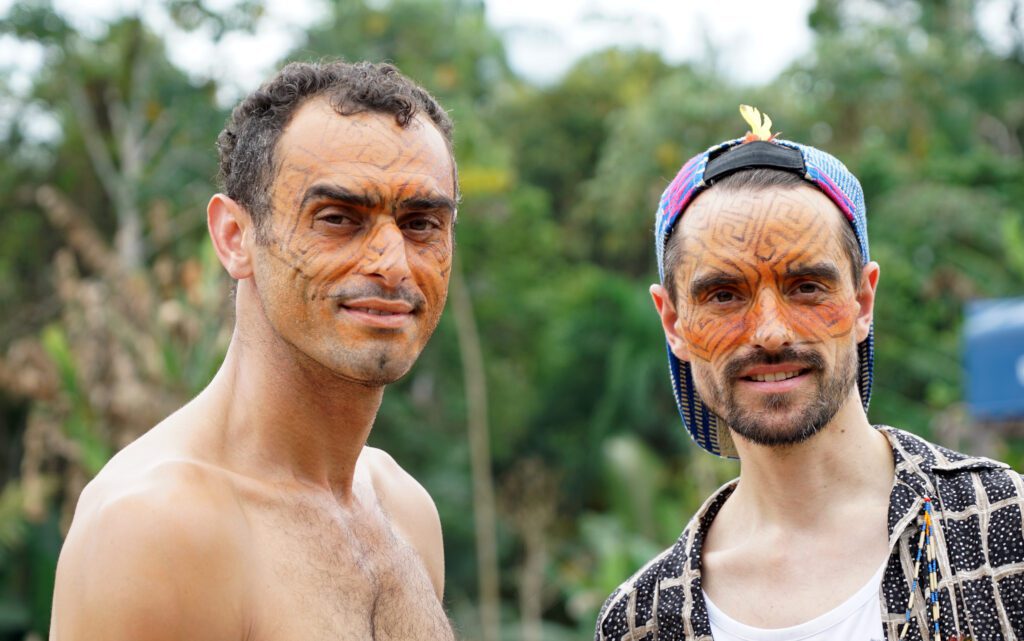
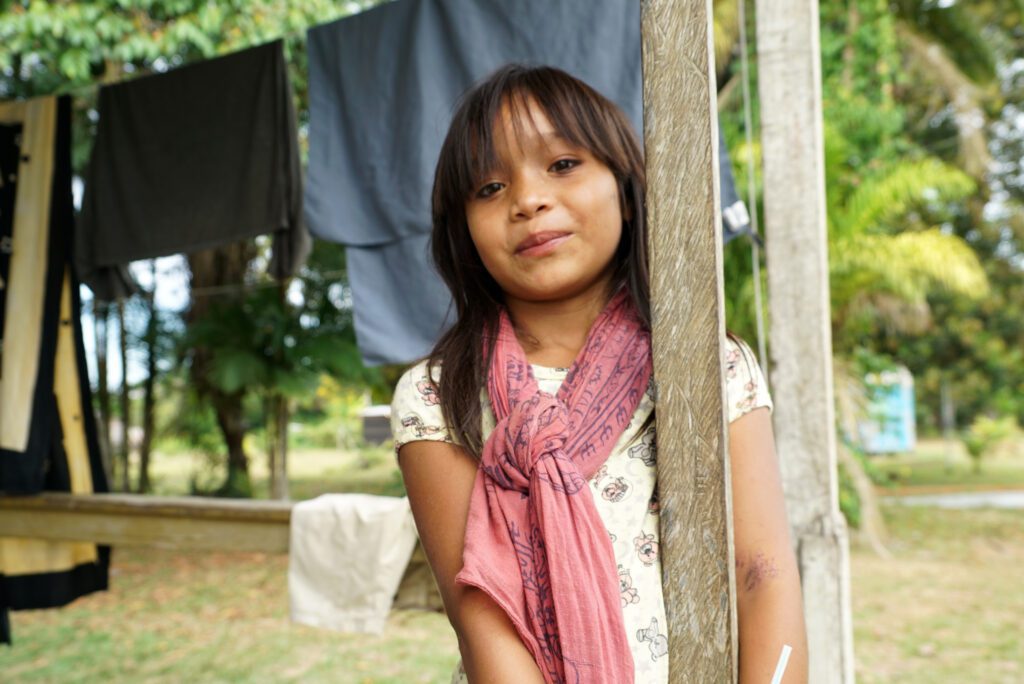
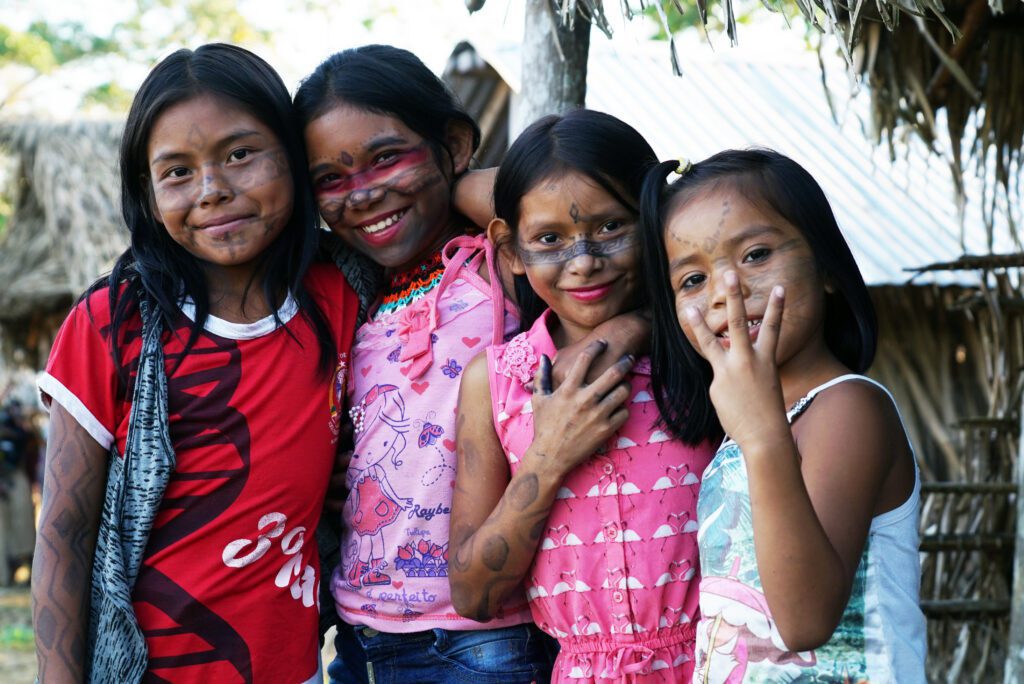
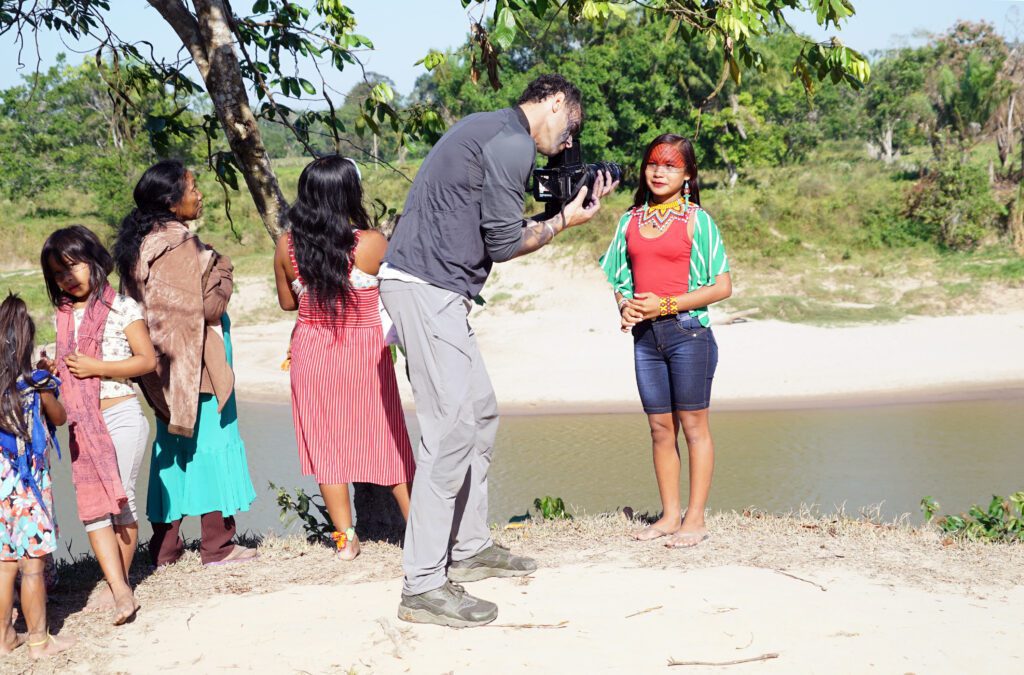
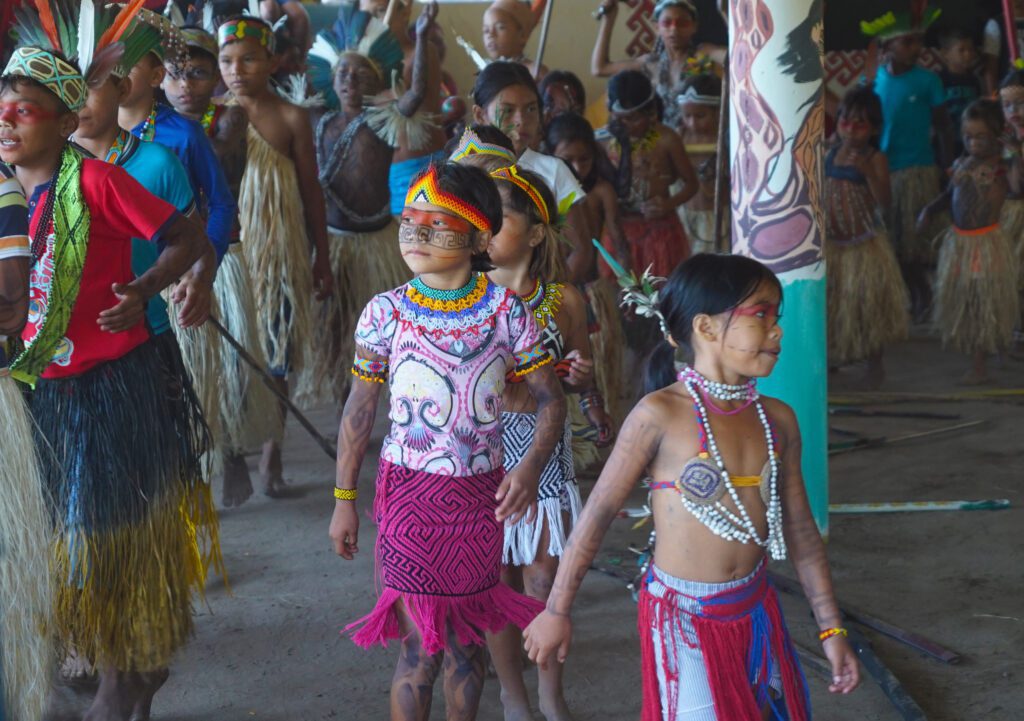
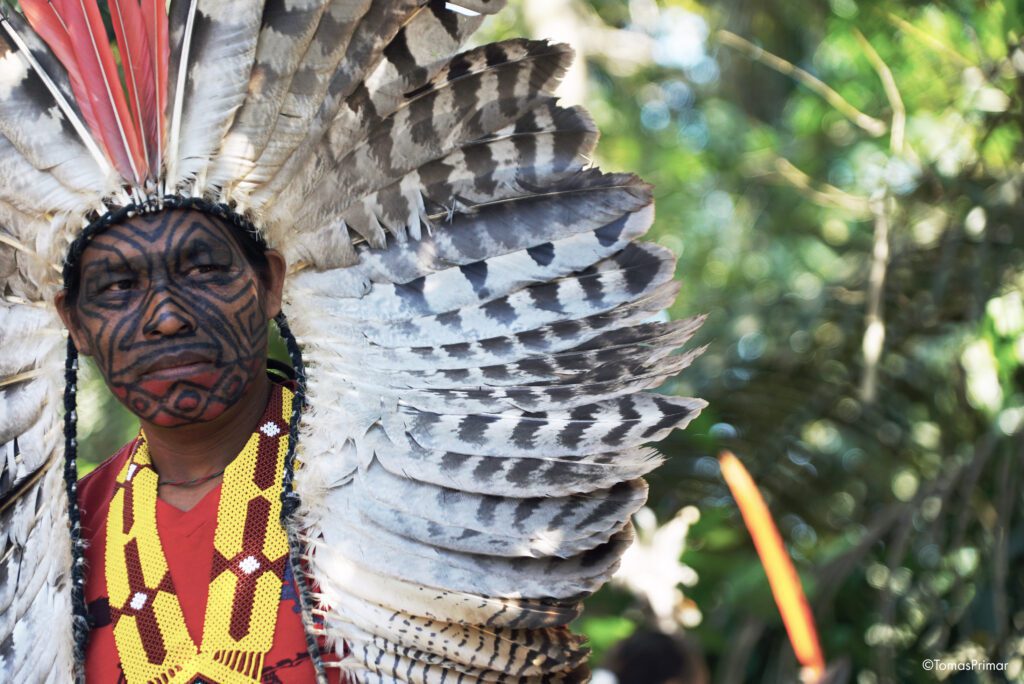
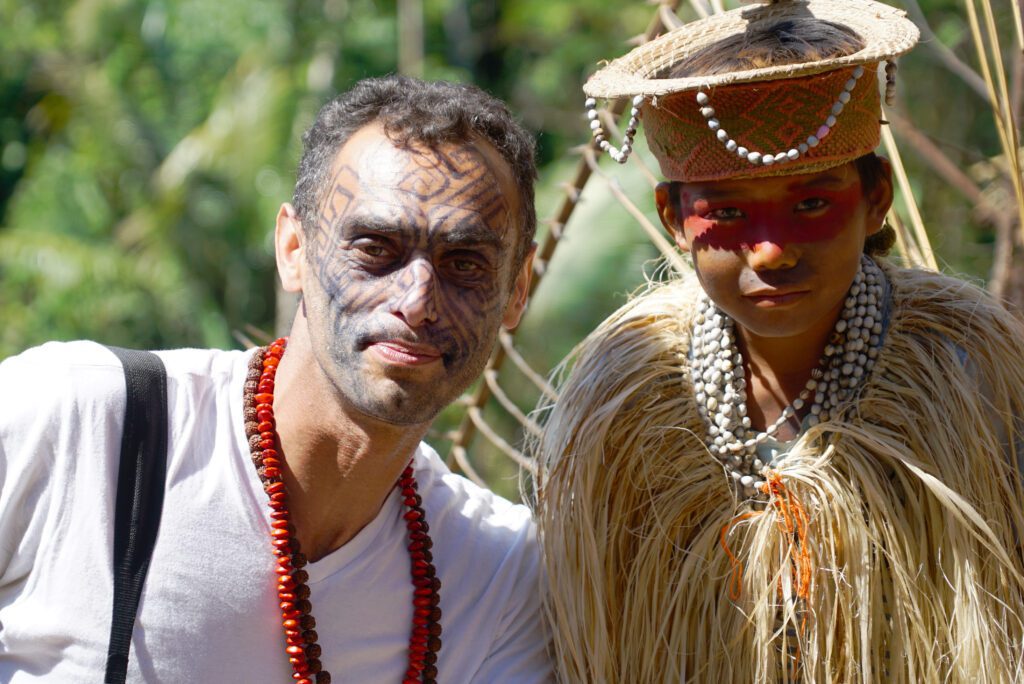
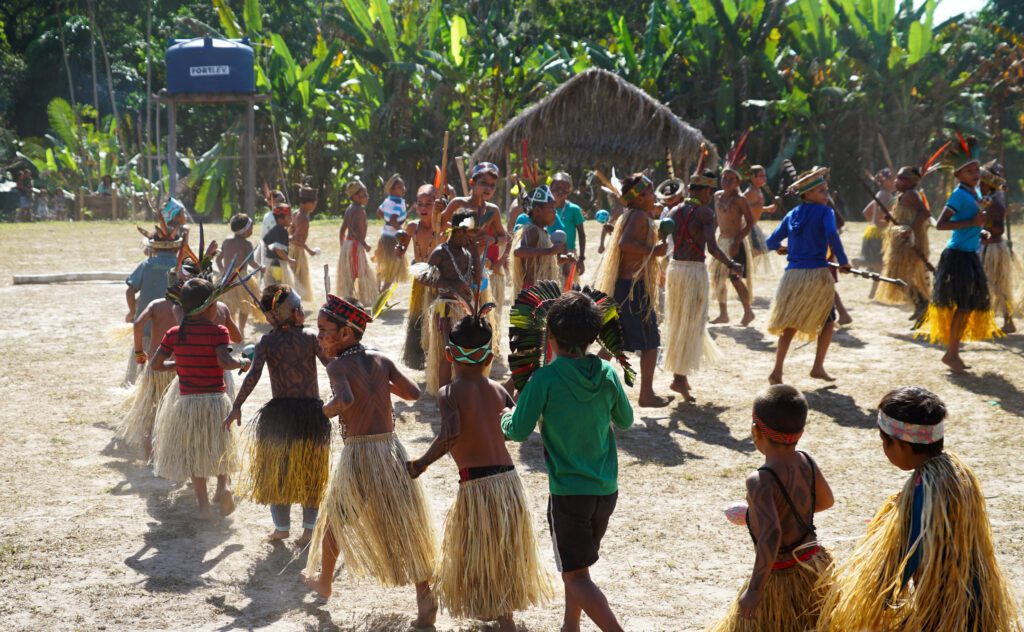

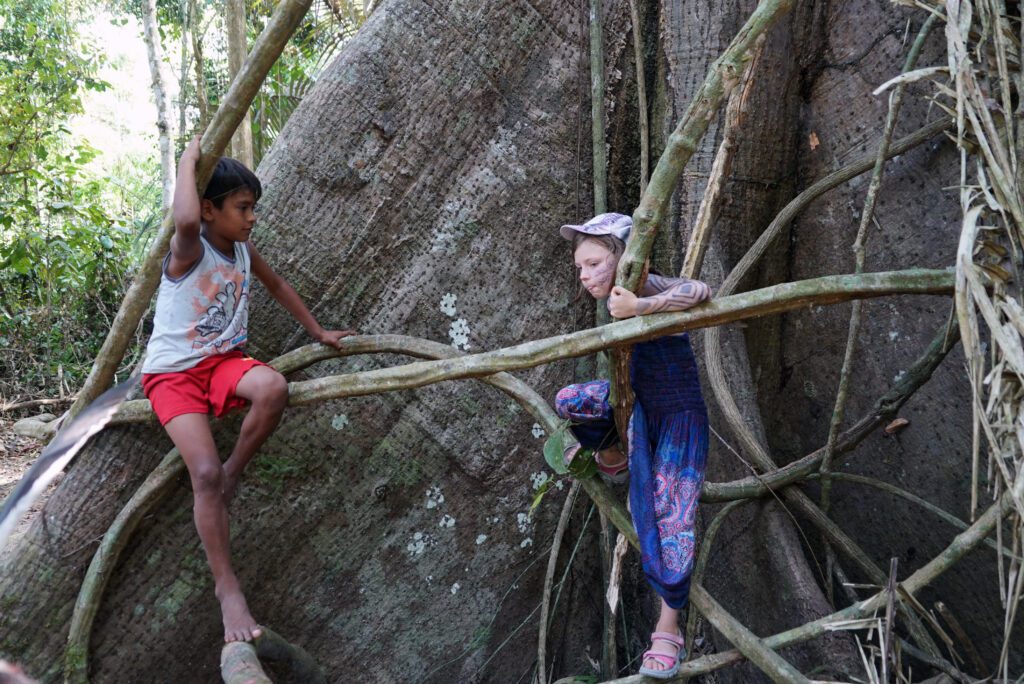
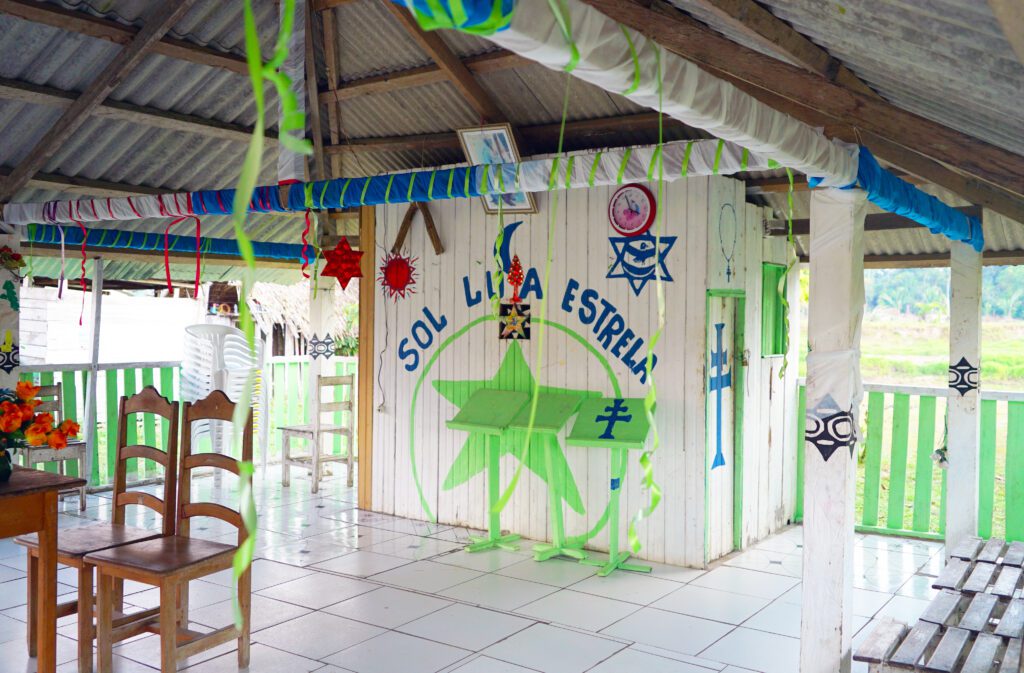
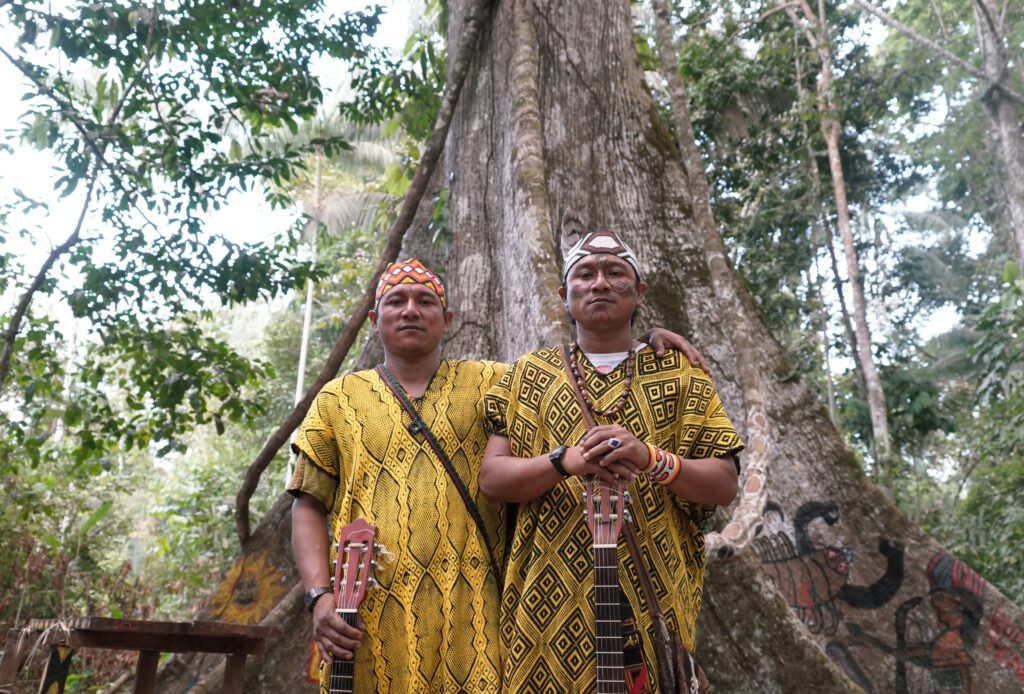
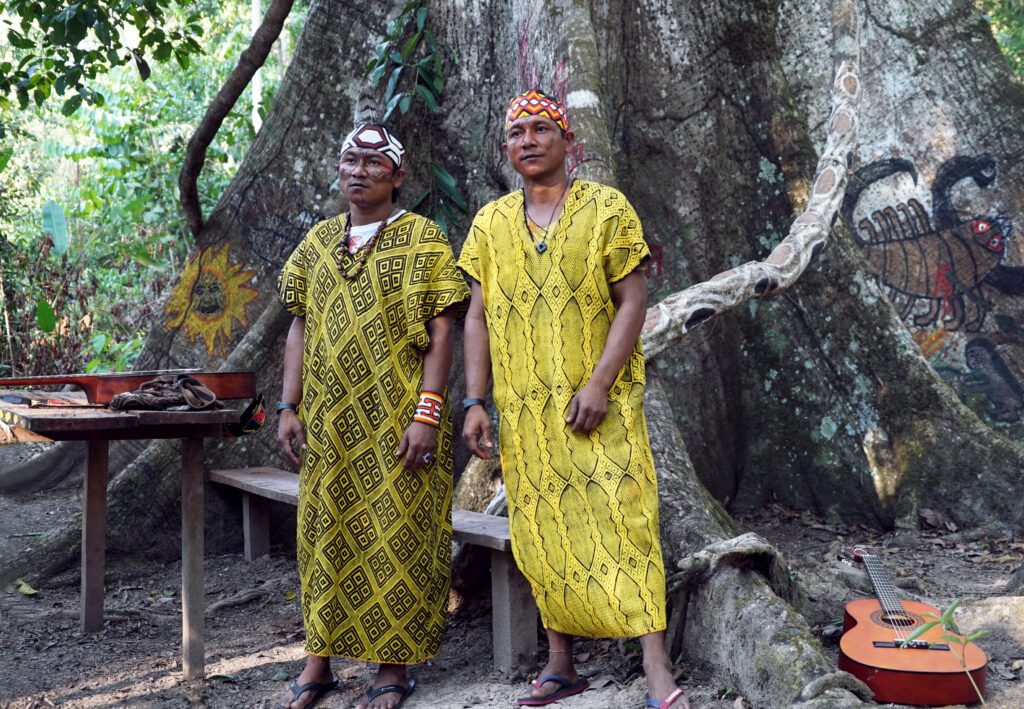
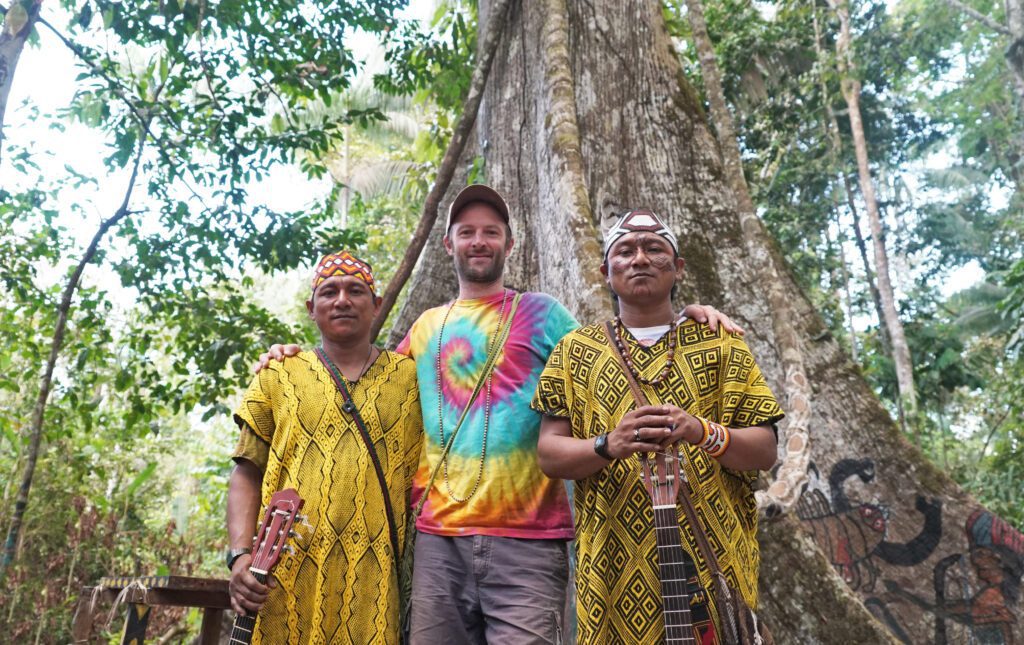
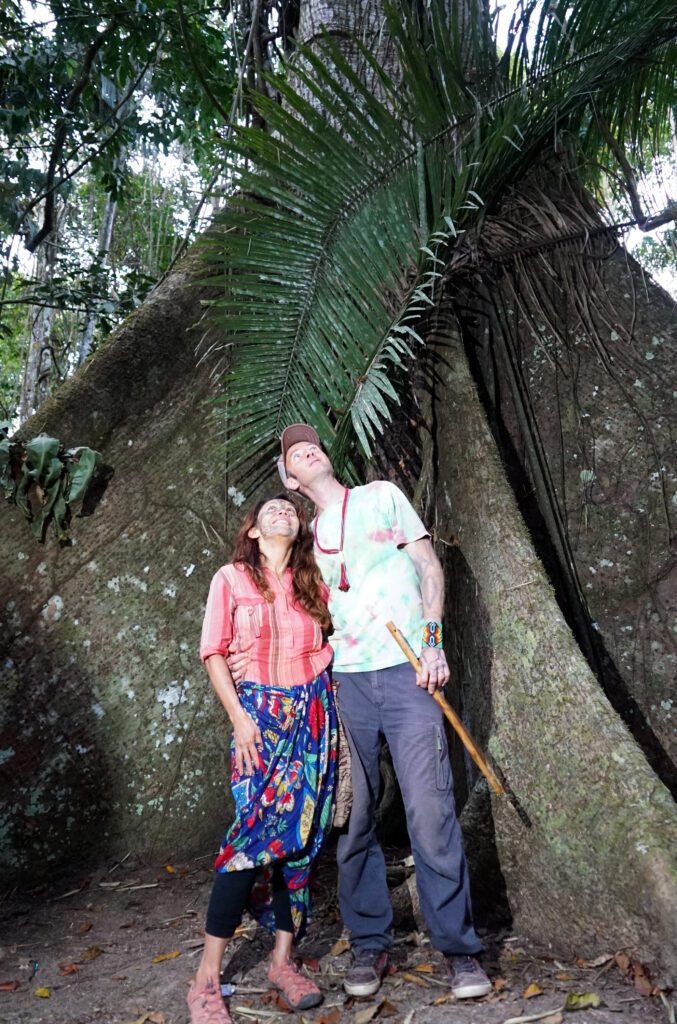
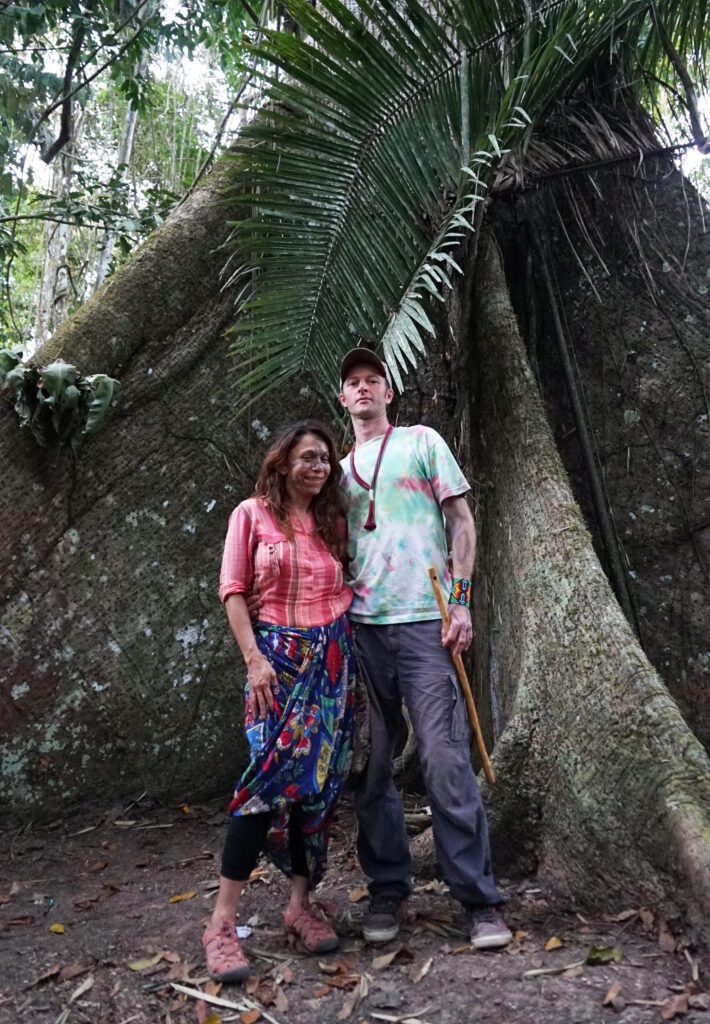

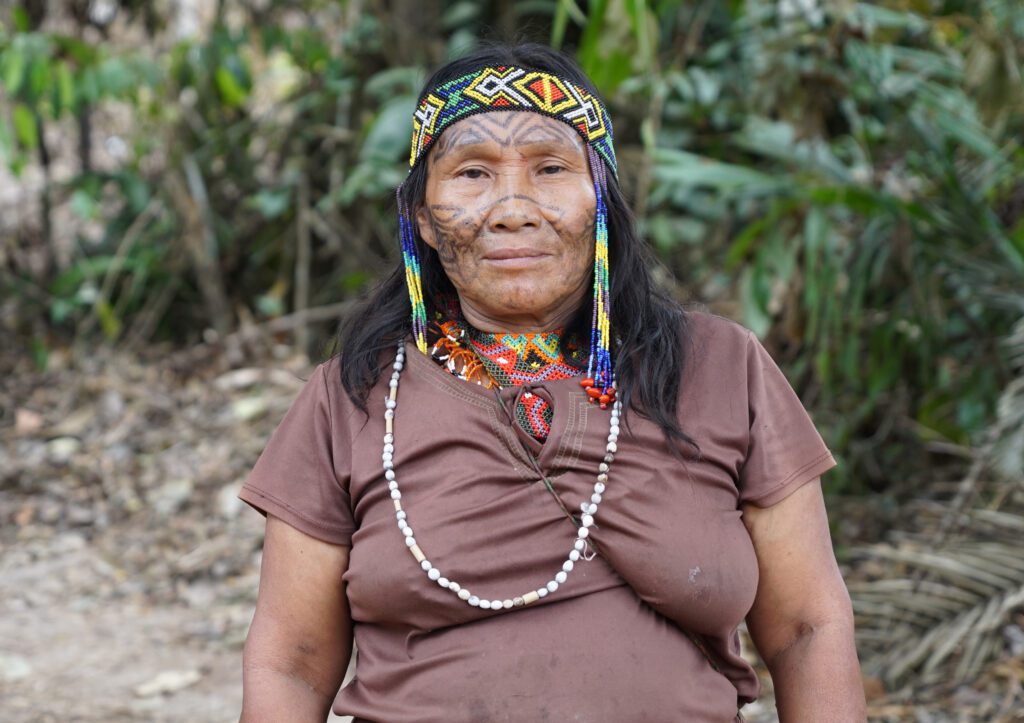
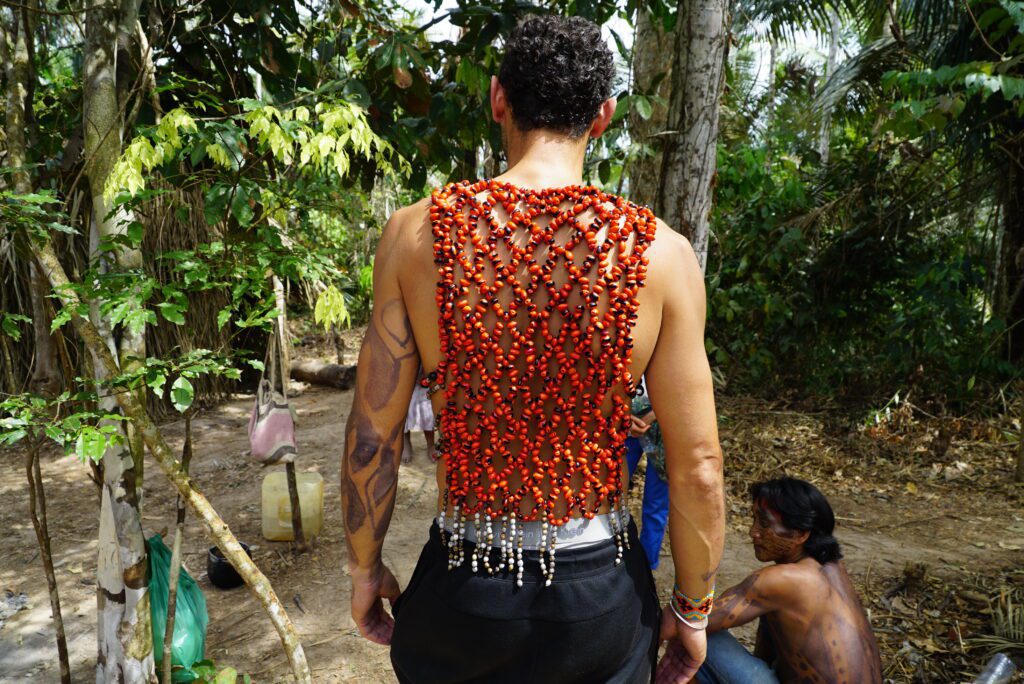
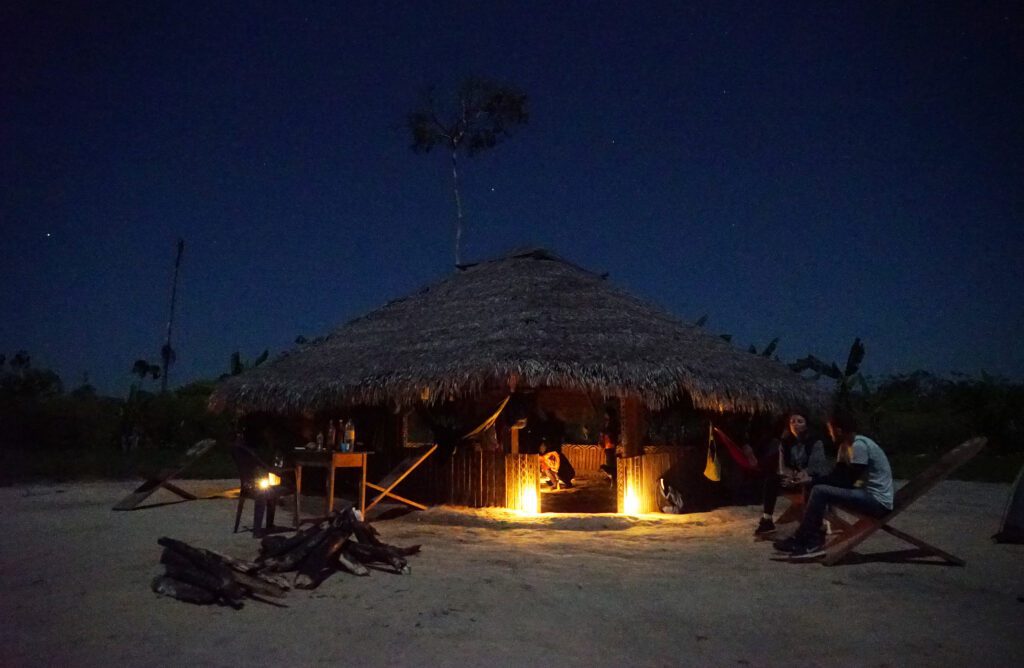
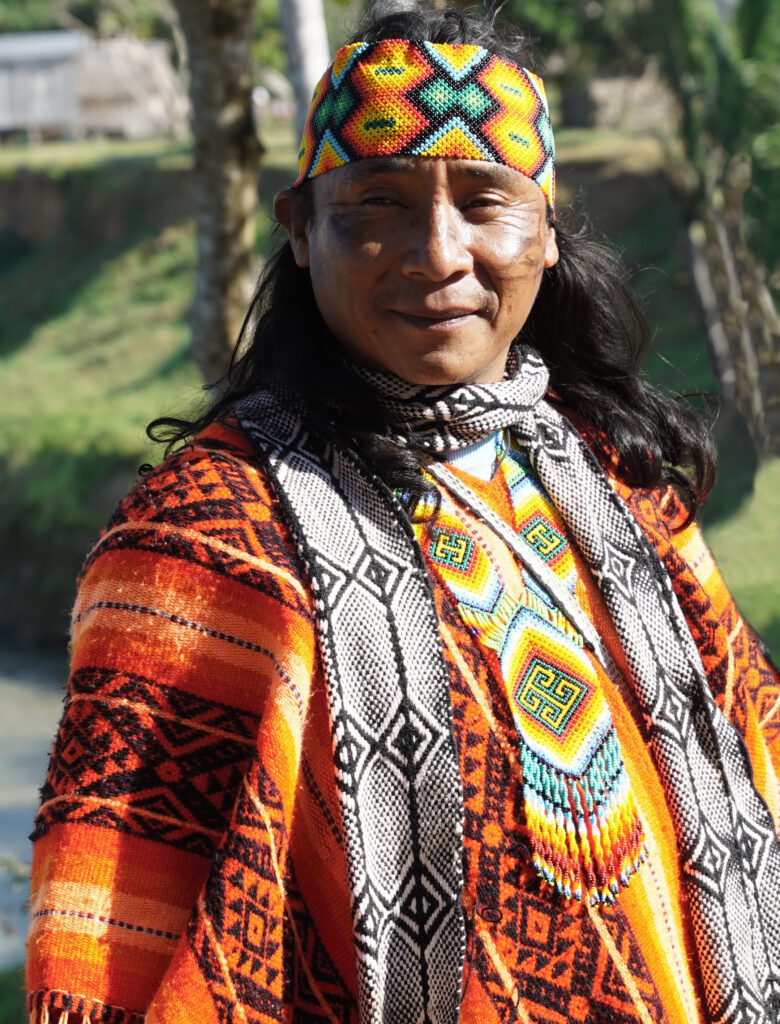
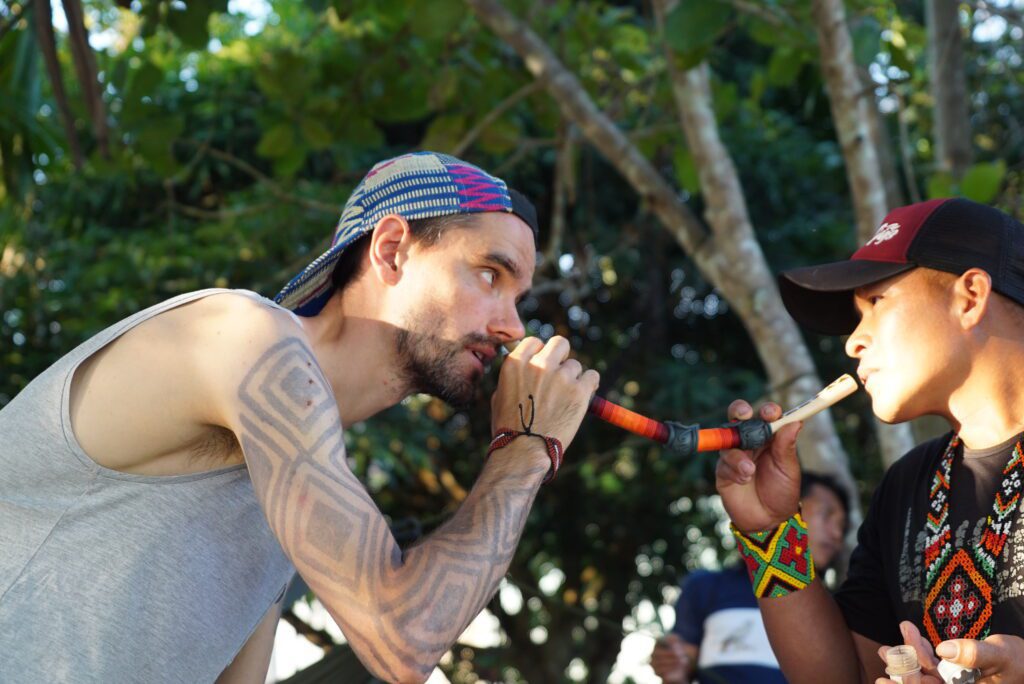
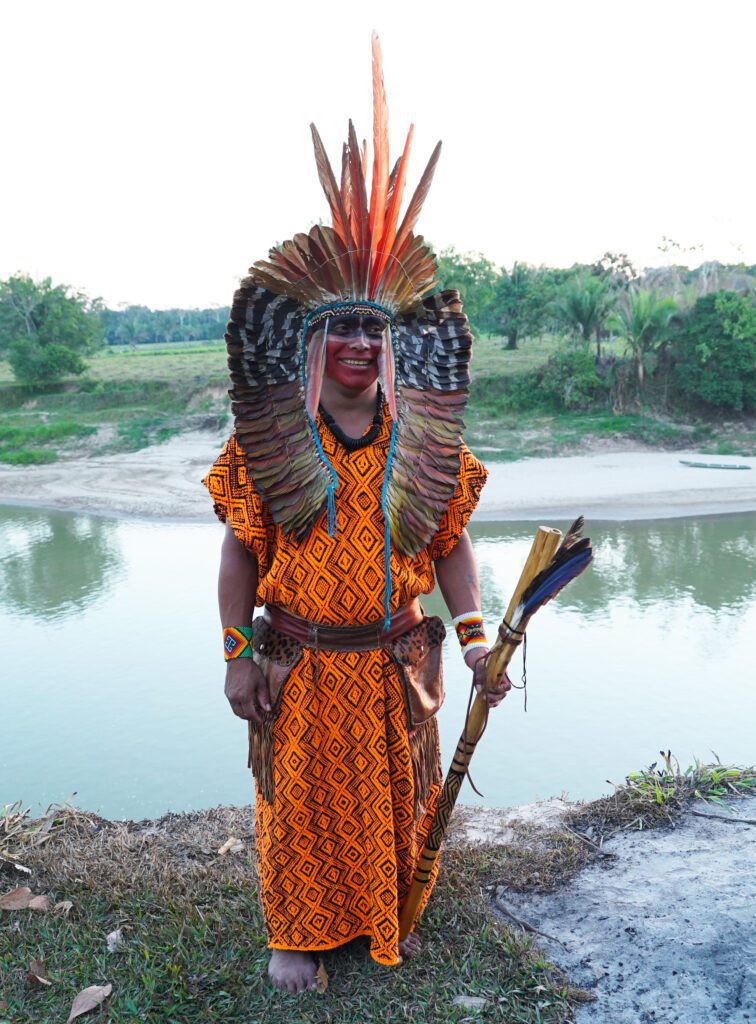
Huni = people Kuin = true.
The Huni Kuin are the true guardians of the forest medicines, such as rapé, which has been scientifically studied for its effectiveness in combatting and preventing diseases of the body, mind, and spirit. “The shaman is the rapé, and the rapé is the shaman,” they say in their lectures and rituals. In a conversation with Chief Nasso, he once told me that even in times of drought or flooding, the elders of the tribe go to sacred places and offer rapé to the great yuxin of nature, thus achieving the climate change they need. What the “white man” considers supernatural, for them, is just something natural, an exchange, a balance.
Their dealings with ayahuasca medicine, which they call “uni,” are culturally the most responsible and genuine. The songs made for the plant stand out for the development of a natural language made for the enchanted beings of the forest, an invitation for everyone to participate in the ritual. The jaguar and the boa are always noticed in the first signs of vision, and the interdimensional portals are completely opened even before the consecration of this master drink, a unique experience where there is the possibility of breaking time-space and the interaction of existing realities, the visible and the invisible, where the world of the ancestors is opened, and the born and the unborn commune.
The Huni Kuin have maintained ancestral baptism traditions, secrets that for millennia were kept by the “grandfathers and grandmothers” of the forest, wrapped in a Samaúma, the sacred tree. Baptism is a kind of diet of a specific potato from the region, and the ingestion of this potato along with roots and vegetables, as well as herbal baths, rapé, and continuous meditations. The diet lasts on average from 15 to 30 days, and after this experience, the young person is considered an adult for the tribe. Another known diet is that of the long pepper called “nixpu” which blackens the teeth, and aims to harden the bodies of Huni Kuin children. From there, they begin to take on specific gender activities, so each person can be baptized only once in their life. During the “nixpu” the child must jump in order to strengthen their bones, through agency prayers called “pakadin.” This is a life-cycle ritual intended to prepare Huni Kuin children for a good life.
The Icaros of Ayahuasca
It is said that God created the world through sound and as sound and music were given to men by the gods, it will always be through music and its sounds that you will find your deep self. The healers/shamans use the music or melody called “Icarus,” which is fundamental for the healer’s work in the Amazon. The “Icaro” melody is captured by the shaman through dreams, visions, and states of consciousness induced by “master plant” mixtures. The music they sing is the way to invoke the presence of the “mother” of the plant “Mother Ayahuasca”, this mother is equivalent to the soul or spirit of man. The “Icaros” that the healers use have very simple lyrics, and they refer to features of the local landscape to which power or symbolism is attributed. Nowadays, many “Icaros” have biblical references that demonstrate the cultural syncretism that merges in the beliefs of Christianity and the ancient cultures of America. Most “Icaros” are written in Spanish, Quechua, and other dialects, depending on the origin of the older teachers, although some are just monotonous and highly repetitive melodies.”
Note: Some terms such as “yuxin”, “rapé”, and “Icaros” do not have direct translations in English and are maintained in their original forms to preserve their cultural meaning.
